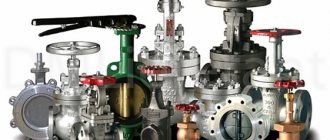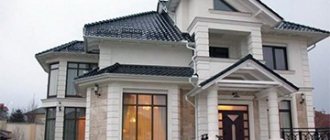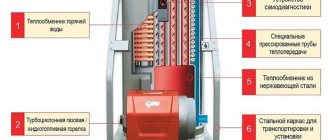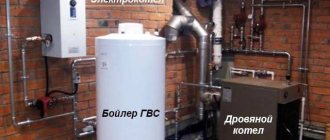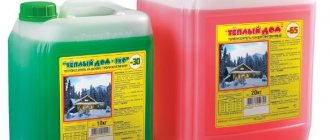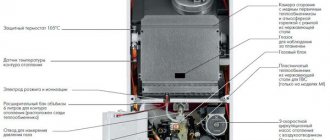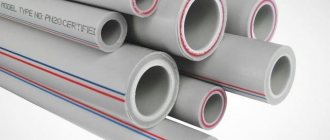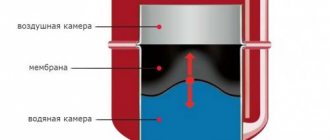Frame construction has a number of undeniable advantages over conventional houses. It allows you to quickly build, does not require special professional skills, and is characterized by the simplicity of the design of houses. In addition, heat saving indicators are high.
In this article we will talk about how to arrange the heating of a frame house, what requirements are imposed on the heating system and which one should be preferred. It must be said that frame houses allow you to organize heating of any type in them - from a traditional Russian stove to convectors.
Heating system for a frame house
There are numerous options for organizing heating in a frame house, which occurs due to the good heat conservation of such types of buildings. Any coolant can be used. The choice of heating system depends on the personal preferences of the home owners and the budget allocated for this matter.
A frame house can be heated:
- Using gas (natural, liquefied), diesel fuel;
- Solid fuel;
- Electricity;
- Systems that receive energy from the earth or the sun.
The best option is to install a combined type frame house heating system. This approach will allow you to heat your home regardless of environmental conditions.
Combined heating may include an electric boiler, a solid fuel fireplace, air heating of a frame house and solar panels on the roof. At night, the house will be heated with water in an electric boiler and in a heated floor system, which will allow the use of a night tariff to calculate electrical energy; in the evening, you can use a solid fuel boiler, and when there is no precipitation, solar panels. In addition, some of the system elements are replaceable with analogues. For example, radiators can be used instead of heated floors, and a gas boiler can replace an electric one.
Advantages of electric heating compared to gas.
- Safety. Electric heating can cause a fire, but not an explosion, in the hands of installers.
- Cheap installation and equipment. Electric heating devices are the cheapest of all. This is important at the time of building a house, when money is tight for everything else.
- Installation anywhere , in a small room, without coordination with different authorities.
- Efficiency – 100% . Electric heating appliances have the highest efficiency of all. All the energy you paid for heats the house, nothing goes up the chimney with smoke.
- Ease of control. There is nothing easier than turning on and regulating electric heating devices.
- Ease of repair. In the event of a breakdown, you do not need to call the gas workers - an electrician is enough. And given the low cost of electric heating equipment, it can be easier to buy a new boiler or electric convector than to repair an old one. How long will it take in the winter after your gas boiler breaks down before it gets repaired?
- Perspective. If there is no gas yet, but it is promised in the uncertain future, installing an electric boiler room is the most reasonable solution. A few years won't ruin you. And when the opportunity arises to install a gas boiler, you can easily integrate it into the existing system next to the electric one. And from now on you will have a duplicate heating system, as reliable as a spaceship! And if there is still no gas, you can duplicate the electric boiler with solid fuel!
Heating system installation procedure
Before starting work on installing a heating system, you need to decide on its type. Afterwards, you need to draw up a project for placing its elements throughout the house, purchase the necessary equipment and materials for installation.
Thanks to the frame structure, laying heating pipes can be carried out at the very end of construction work. But if you don’t want to disassemble the wall cladding, then you should think about the heating system in advance.
As a rule, heating pipes are mounted on top of the frame and finishing; placement between the wall and sheets of drywall is often found. The external option is preferable, since it will not be necessary to perform any actions with the structure of the house, and access to communications will also be provided in case of their breakdown.
If you plan to install a combination boiler, you will need to strengthen the foundation under its location in advance, since the unit has considerable weight. In addition, it is necessary to consider a fire extinguishing system in case of an emergency. In this regard, a combination boiler is a rather problematic option.
What systems are used
If heat losses are too high, but no power outages are expected, you should choose a radiator system in which the coolant is moved using a circulation pump.
But if the electricity supply in a given area is not very reliable (interruptions are possible, especially in winter), it is better to choose a gravity-type system (gravity flow). She is not afraid of power outages. The coolant in it moves due to changes in the density of the heated and cooled liquid, under the influence of gravity (gravity), which does not turn off under any conditions. Despite lower efficiency, more complex installation and higher cost, it works without outside intervention.
Whatever the system option, to install it you must:
- Place radiators near doors and under window openings
- Secure connecting elements (manifolds and metal-plastic pipes)
- Fill the system with coolant. In case of a shutdown, it is better to use antifreeze, which will not freeze and will not cause a pipeline rupture
Pipes can be routed along walls, hidden in the floor or behind a suspended ceiling. When installing a heating system during construction, you can lay the pipes inside the frame.
Electrical heating
Heating for a frame house using electricity is a fairly popular option, but the cost of constantly heating the building with its help is relatively high. Its installation does not require obtaining any special permits, it can be carried out in any conditions, and there is no need to spend money on consumables.
The electric boiler is installed according to the rules for installing any other electrical equipment. Wiring is calculated based on the power of the equipment with a reserve for overloads and requires reliable insulation.
Warm floor
The underfloor heating system is installed on subfloors. It is first necessary to install a vapor barrier on the surface to protect the floor from moisture. Next, heat-reflecting material is laid to prevent heat dissipation, after which heating mats are laid. Finally, finishing and installation of heated floor control systems are carried out.
The advantage of the solution is that warm air rises up from the surface of the floors and is distributed throughout the entire space of the room, and cold air falls to the bottom, where it also warms up.
Electric heating
Most often, heating a frame house with electricity surpasses other options in popularity. Installation of electrical appliances does not require additional permits, they do not depend on environmental conditions, and do not require additional consumables.
Electrical heating circuit.
An electric boiler is installed in accordance with the rules for installing other electrical equipment: all wiring in a frame house is calculated according to the power of the device with a reserve and is reliably insulated.
The following types of electric heating can be used in a frame house:
Warm floor
Warm floors in a frame house are installed on the subfloor. The surface must be covered with a vapor barrier material. It will protect the flooring from high humidity. Reflective material is placed on the prepared surface, which will prevent heat dissipation; thermal mats are placed above. The floor is finished and all system controls are installed.
Installation of a warm house.
The main advantage of a heated floor is air heating of a frame house; warm air rises evenly from the floor and is distributed over the entire surface, while cold air gradually falls down, where it is also heated.
Electric boiler
Installation of an electric boiler can be carried out without the involvement of specialists, but the following must be observed:
- Wire cross-section, according to the technical documentation of the equipment.
- The switch is located in the same room as the boiler.
- If a boiler is used, it is mounted above the electric boiler.
- All electrical wiring in a frame house is laid in advance.
- During installation, the necessary safety rules are observed to avoid electric shock.
During operation of the electric boiler, monitoring is constantly carried out for the absence of leaks and poor insulation.
Electric boiler
You can install an electric boiler yourself, but a number of nuances should be taken into account:
- The cross-section of the wires must comply with the requirements specified in the documents for the equipment;
- The switch may only be placed in the same room as the boiler;
- If you plan to use a boiler, then it should be located above the electric boiler;
- Wiring in a frame house must be done in advance;
- Installation of electrical equipment requires strict adherence to safety precautions in order to avoid electric shock;
- The boiler must be regularly inspected for leaks and damage to the insulation.
Gas heating
Heating a frame house with gas is the most popular method. A gas boiler has long served as a reliable source of heat in the house.
It should be noted that gas supply to the house is not so fast and not so simple. You will first need to obtain permits from various authorities over the course of several months.
Gas heating can be installed only with the help of special equipment, which is not cheap. Installation and commissioning work is just as expensive, which is why many people prefer electric heating systems.
However, if we consider the long term, gas heating will be much cheaper than other types of heating. The low price of gas covers the cost of installing equipment. In just a few years, you will “recoup” all the money spent.
Heating with convectors
You can also warm up a frame house using water and electric convectors. Using water convectors, we get the same wiring as with radiators.
Features of heating a frame house with water convectors:
- They warm up the room very quickly. After 5 minutes it's already warm
- The room also cools down very quickly due to rapid heat removal
- Temperature changes very quickly if you use adjustment
- Through the use of convectors, it is possible to use weather-dependent automation.
With heating with electric convectors, everything is much simpler. Calculate the approximate heat loss of a frame house in each room and select the required device based on power. Plug in the convector and be satisfied with the warmth.
When using electric convectors, you are heavily dependent on electricity. Depending on its availability and capacity. Plus, heating with electricity is often more expensive. Keep this in mind. But convectors are quite cheap.
Stove heating and fireplaces
Heating a frame house without using gas can be done using a stove or fireplace. Since time immemorial, people have loved to look at fire, which gives a feeling of coziness and comfort. Modern solutions offer many ways to contemplate “live” fire. Their use makes it possible to create a feeling of comfort in the house, and the fireplace itself can act as a heater.
Among the advantages of a fireplace are high heat accumulation and its uniform distribution. The materials for making fireplaces are presented in a wide range, so everyone will find something to suit their taste. Of course, fireplaces are not without their drawbacks. The most tangible is the need to purchase firewood to keep the fire going. In addition, when using it, it is very important to follow fire safety rules.
An alternative option is stove heating of a frame house. If you constantly add firewood as needed, the stove will maintain the required level of heat in the house for a long period of time. In addition, the premises will be heated already five minus after kindling. There are also very different options for the implementation of stoves; the unit can be placed in a corner, near a wall and in other places. In addition, the oven can be used for cooking food.
Other heating options
Convector
Any structure can be heated with convectors, water or electric. For water convectors, you can use the same coolant distribution system as for radiators; for electric ones, you can use a regular electrical network. The advantages of this option:
- Very fast warm-up
- When adjusted, the temperature changes immediately
- Possibility of using weather-dependent automation
But the disadvantages are that the room cools down just as quickly when the electric convectors are turned off. And in general, heating costs more. Although the convectors themselves are quite cheap.
Air heating
The advantages of heating the house with an air flow brought to the desired temperature include:
- Warm-up speed
- Instant reaction to weather changes
- Lack of heating devices on the walls
But do not forget about the disadvantages:
- High cost of equipment
- Noisiness;
- The need to provide space under the ceiling for air ducts
Stove heating
A stove in a frame house is one of the most affordable and ancient systems. This is a simple and time-tested solution. A well-heated stove will create comfort and warmth in your home.
But there are also significant disadvantages of this solution - the stove must be constantly cleaned and heated, which creates additional dust and dirt. In addition, fire safety measures must be strictly observed.
Read other articles on this topic
| How to heat a private house | Basic rules for the location of radiators when heating a private house |
| Collector heating system for a private house | Water heating in a private house |
| Autonomous heating of a private house | How to heat your home without gas |
| Heating your home is the most economical way | Installation of a heating system in a private house |
| Heating project for a private house | The best heating for a private home |
| Heating the house with liquefied gas | Country house heating system |
| Installation of a heating system: rules and description | Infrared heating of houses |
| Gas consumption for heating a private house - consumption calculation | Heating distribution for a two-story house |
| Heating a private house from metal-plastic pipes | Heating a private house with a heat pump - pros and cons |
| Heating diagram for a two-story house | About heating schemes for a private house with a gas boiler |
| Heating and water supply of a country house: description of installation technology | Heating a private house with convectors |
| Heating a private house with electricity | Heating system for a private house with natural circulation |
| Heating wiring diagrams from a boiler in a private house | Features of heating a country house with electricity |
| Combined heating system for a private house | Heating system for a private house using a warm baseboard |
| Heating a private house with forced circulation | How to save on heating a country house |
| Do-it-yourself heating of a private house made of polypropylene | Heating a private house with underfloor heating |
Services on this topic
| Heating design | Turnkey solid fuel heating |
| Turnkey gas heating | Turnkey heating |
| Heating in a turnkey wooden house | Turnkey water heated floor |
| Installation of water heated floor | Heating a two-story house |
| Heating installation in a cottage | Heating a country house: options and prices |
| Heating installation | Heating installation in a private house |
| Installation of plumbing and heating engineering systems | Diesel heating of a country house |
| Autonomous heating on a turnkey basis | Air heating of a country house |
| Prices for heating installation in a private house | Design and installation of heating systems |
| Water heating in a private house | Electric heating of a country house: options and prices |
| Heating in a townhouse | Gas heating design |
| Heating design cost | Heating calculator for a private house |
| Installation of water heated floors in a private house | Price for installing a water heated floor |
| Installation of water heated floors on a wooden floor |
Using a solid fuel boiler
Heating for a frame house using a solid fuel boiler is the best option for houses without gas supply. It allows you to use a wide variety of raw materials for heating - firewood, peat briquettes, wood and paper production waste. In a solid fuel boiler, not only the raw materials themselves are burned, but also the gas released during the process, which can significantly increase the efficiency of the equipment.
The principle of operation of a solid fuel boiler is as follows: through the heat exchanger pipes in the boiler, the air mass is heated, which subsequently enters the premises of the building. The convection process makes it possible to increase the temperature in the house to the required values within a short time.
Equipment operating on solid fuel supports several operating algorithms:
- Stage-by-stage heating of the house;
- Fast heating;
- Maintains the set temperature for 12-15 hours.
Nuances and conclusions
To ensure maximum effect from the heating system, the frame house must be properly insulated. At the same time, not only floors and walls require thermal insulation. According to research, the greatest heat loss occurs through ceilings. To avoid this, you need to insulate not only the ceiling, but also the attic space, if there is one in your house.
This concludes our review of the most popular options for heating a frame house. Any solution has its own list of pros and cons. When choosing a heating system, you should take into account the area of the building, whether it is possible to supply gas and other nuances. However, the most rational option would be to use a combined type of heating.

